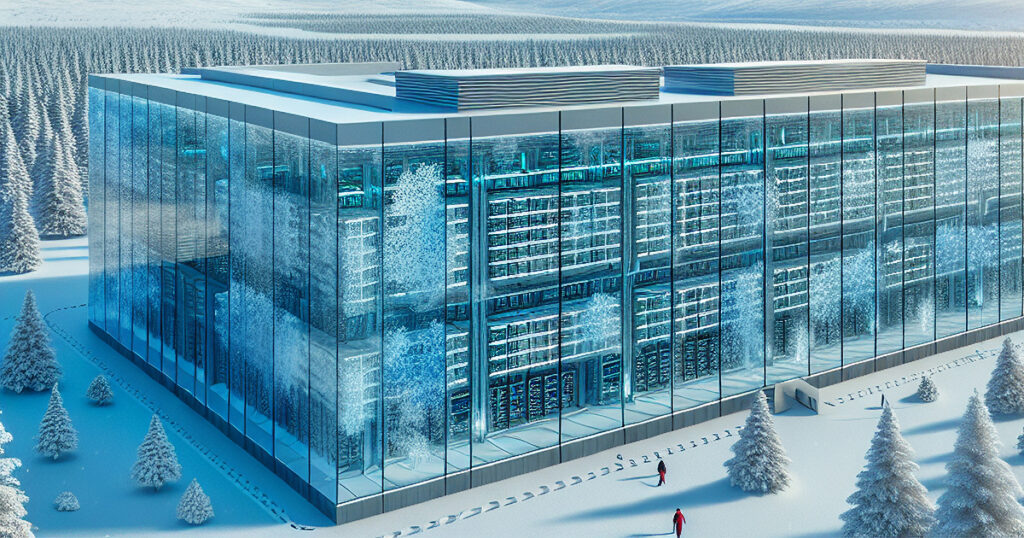What Is Free Cooling in Data Centers?
Free cooling refers to leveraging the external environment cold air (air-side economization) or cool water sources (water-side economization) to cool IT equipment without relying on compressors or traditional HVAC systems. When outdoor temperatures are low enough, a data center might use 50°F ambient air to cool servers, dramatically reducing electricity use and improving energy efficiency. This technique is especially effective in cooler climates or during winter months. However, implementing free cooling effectively requires continuous monitoring and precise environmental control challenges that can be overcome with the right Data Center Infrastructure Management (DCIM) tools.The Role of DCIM Software in Free Cooling Success
Free cooling sounds easy, until you try it. Real world execution requires careful coordination between environmental inputs and system behavior. DCIM software like Modius OpenData acts as an intelligence layer between cooling infrastructure and operational decision making. It ensures your data center management teams are working with real time data, enabling:- Intelligent switching between free cooling and mechanical cooling
- Automated alerts and thresholds for temperature, humidity, and air quality
- Visualization and control of complex hybrid cooling systems
- Historical analysis to fine-tune cooling strategies over time
Why Free Cooling Is More Complicated Than It Seems
Climate and Location Dependency
Air Quality Challenges
Humidity Control
Water Consumption
Cost and Complexity
How Modius OpenData Enables Smarter Cooling Decisions
The OpenData Cooling Module uses data collected from equipment and environmental sensors for operational analysis of cooling distribution and efficiency. It’s a next generation DCIM platform that empowers data center teams with real-time operational visibility. Its strength lies in correlating data across power, cooling, and environmental systems enabling precise control over free cooling strategies. With OpenData, facilities can:- Continuously evaluate external conditions for free cooling viability
- Integrate temperature and humidity thresholds directly into automation routines
- Manage hybrid cooling infrastructure with ease
- Ensure uptime while still hitting energy efficiency goals
Final Thoughts
Free cooling can dramatically reduce energy costs and support sustainability goals, but it’s far more complex than it first appears. Success depends on a variety of factors, including climate, air quality, humidity, water usage, and most importantly, your ability to monitor conditions and respond in real time. That’s why the right DCIM software is more than nice to have, it’s a necessity. Platforms like OpenData provide the visibility and control needed to make free cooling a reliable part of your data center infrastructure management strategy. Ready to make free cooling work for your facility? Discover how OpenData can optimize your environment and simplify your operations. Schedule your demo today! We are passionate about empowering our clients to run more profitable data centers while providing unmatched visibility into operational data. Modius has been delivering DCIM solutions since 2007. We are based in San Francisco, are proudly certified for ISO/IEC 27001 and as a Veteran-Owned Small Business (VOSB). Contact us at sales@modius.com or (888) 323.0066 to learn more.About the author

Meet Matt Charavell, Senior Project Manager of Solutions Delivery at Modius. With over 30 years in telecommunications and 5 years in the data center industry, Matt brings deep technical expertise and strategic leadership to every project. Since joining Modius, he’s successfully commissioned multiple 36MW sites and quickly mastered the complexities of data center operations. He’s managed multimillion-dollar accounts, led global rollouts of OpenData DCIM, and built teams from the ground up, always focused on delivering results with clarity and accountability. Matt sees the evolution of DCIM from basic monitoring to intelligent, AI-driven platforms as a game-changer, and believes Modius OpenData stands out for its direct-to-device insight that enables swift responses and reduces downtime. Passionate about the future, he likens the industry’s current momentum to the 1990s dot-com boom and anticipates smaller, more powerful data centers powered by advanced chips and AI. Outside of work, Matt enjoys time with family and friends, plays daily frisbee with his lab, and restores his 1972 Gran Torino, a hands-on passion that reflects his love of classic cars and craftsmanship. Fun fact: despite his gritty, technical edge, Matt’s wife swears he’s the best gift-wrapper in the house, bows, and all.

